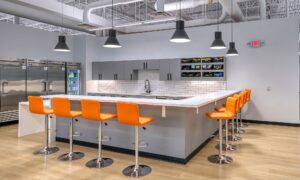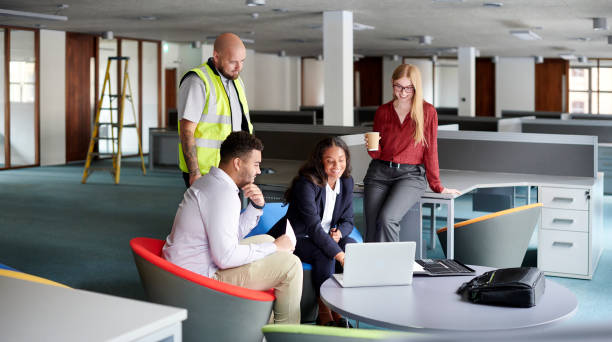Finding the right amount of office space to lease is crucial for any business. Whether you’re a startup, a growing company, or a well-established organization, the size of your office can significantly impact your operations, employee satisfaction, and even your bottom line. So, how do you determine the right amount of space for your needs? Let’s break it down.
Understanding Your Business Needs
Employee Count
Start with the basics: how many employees will be working in the office? A common rule of thumb is to allocate around 100 to 150 square feet per employee. This includes space for their desks, personal items, and some shared areas. If you have collaborative teams, consider an open layout or shared spaces to encourage teamwork.
Type of Work
Consider the nature of your business. Do you need private offices for client meetings or confidential discussions? If so, you’ll need to factor in additional space for conference rooms and private offices. Creative businesses might benefit from open spaces that foster collaboration, while law firms or financial services may require more privacy.
Planning for Growth
Scalability
When choosing your office space, think about your future growth. If you’re planning to hire more employees or expand your operations in the next few years, opt for a space that allows for scalability. It’s often more cost-effective to rent a slightly larger space now than to relocate frequently.
Flexibility
Consider co-working spaces or flexible leases if you’re uncertain about your long-term needs. These options allow you to adjust your space requirements as your team grows or shrinks, without the hassle of a long-term commitment.
Amenities and Features

Break room area done by TSOF
Meeting Rooms
If your business relies on meetings, think about how many meeting rooms you’ll need. A good balance is to have one meeting room for every five or six employees, plus additional space for larger gatherings or training sessions.
Break Areas
Don’t forget about break rooms or lounges! These spaces are essential for employee morale and productivity. Ideally, you should have at least one break area that accommodates your team comfortably.
Location Matters
Accessibility
The location of your office can affect how much space you need. If you’re in a bustling area with high foot traffic, a smaller, well-designed space may be sufficient. On the other hand, if you’re in a suburban area, you might need more square footage to create an inviting environment.
Cost Considerations
Remember that renting more space than you need can significantly increase costs. Consider your budget and weigh the benefits of location against the size of the space. Sometimes, compromising on location for a more spacious office can lead to higher operational costs in the long run.
Designing Your Space
Layout Optimization
Once you have a rough idea of the space you need, think about the layout. Efficient use of space can make a smaller area feel larger. Open floor plans, shared workspaces, and multipurpose areas can maximize your office’s functionality.

Employee Input
Involve your team in the design process. Their input can provide valuable insights into what they need to be productive and comfortable. This engagement can also foster a sense of ownership and improve workplace satisfaction.
In conclusion, determining how much office space to rent involves a careful balance of current needs and future growth. By understanding your team dynamics, planning for scalability, and optimizing your layout, you can find a space that not only meets your operational needs but also fosters a positive work environment. Take your time in the decision-making process; the right office can enhance productivity, boost morale, and set the stage for your business’ success. Happy hunting!
CHAIRS
SIT-TO-STAND
SAFE OFFICE SOLUTIONS
OFFICE FURNITURE & ACCESSORIES

